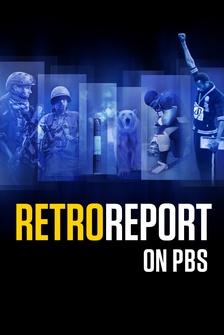JOHN YANG: This summer, the effects of climate change have been hard to miss across North America and Europe, record heat, wildfires and warming oceans.
There are other less obvious consequences.
Rising greenhouse gases, warmer weather and changes in precipitation all affect both the quantity and quality of food crops.
Earlier I spoke with Jonas Jagermeyr, a climate change scientist at Columbia University and the NASA Goddard Institute for Space Studies.
I asked him to explain the relationship between climate change and the global food supply.
JONAS JAGERMEYR, Columbia University: If you're asking for the main drivers factors that really affect crop growth in the field, then it's mainly three aspects it's temperature, precipitation, and then something that's much less known is carbon dioxide, Co2 in the air, you know, and temperature precipitation, they create extreme events such as droughts, heat waves, and then hail and flooding is it is a big problem in agriculture too.
But the Co2 effect, it creates climate change of the will, at the same time crops love it, the plan growth is stimulated by Co2, at the same time it creates adverse effects through all these cascading effects of climate change.
JOHN YANG: Does this affect all crops the same?
JONAS JAGERMEYR: That's a very good question.
Some crops are very sensitive to that Co2 effect.
Other crops are not.
So then, for example, corn, maize, is doesn't really benefit from higher Co2 levels.
So the full run of temperature and shifting precipitation patterns are felt in maize growing.
So globally aggregated, corn is really seeing the largest negative impact.
JOHN YANG: So it sounds like there are winners and losers in terms of crops and in terms of regions.
JONAS JAGERMEYR: I think that's a message that we need to get comfortable with coming, that climate change isn't just a negative blanket of adverse impacts.
But we want to be really careful because potential positive or potential gains are difficult to realize.
And what's important is think of the regions where they could happen.
So low latitudes, generally we're speaking of lower income countries, multiple they're affirming that have much less capacity to adapt.
So larger negative impacts will directly impact livelihoods and the food system in general, whereas in you know, developed breadbasket regions in the Global North, there is more adaptation capacity that can buffer some of these negative impact.
JOHN YANG: And this can also affect the nutrient, so the nutritional value of crops, is that right?
JONAS JAGERMEYR: Correct.
When I say Co2 is beneficial for plant growth and development.
At the same time, it dilutes the nutritional content of crops.
So, it moderates any gains you may see from higher Co2 levels and the nutritional quality.
The protein content, micro micronutrients such as zinc and vitamins and an iron, these components aren't taken up, aren't produced by the crop at the same pace they're growing.
So it's a dilution effect.
And it lowers the nutritional quality of the crop, which raises concern for global nutrition.
JOHN YANG: Put this all together for us and tell us the practical effects of all of what you've just explained in terms of people's diets in terms of food insecurity and in nations in places that are already experiencing food insecurity, what are the practical effects of all this?
JONAS JAGERMEYR: We have to get comfortable with the idea that agriculture is facing a new climatic realities and has to undergo a fundamental transformation.
There will be winners and losers.
Some regions may potentially benefit from moderate warming and higher Co2 levels.
Vast majority of global best bread baskets will see adverse impact.
And there needs to be a proactive and long planned adaptation, implementation, that the key to making Global Food Systems sustainable and climate resilient.
JOHN YANG: Adaptation, what needs to be adapted?
JONAS JAGERMEYR: To farming feel, first of all can do intuitive things, such as shifting your planting dates, right?
If it's warmer, you just go out earlier.
And that's already happening, we see that you have to think of new varieties, new cultivars, that -- and that's a challenge for breeders, to develop these new varieties that are adapted to these new climate realities that are late maturing, they exploiting a warmer environment.
But it's unclear at the forefront of research, how far they can go.
And then, you know, later you can switch to two new crop all together in regions where besides it's not viable to grow corn anymore, we as consumers play a big role.
And first of all, with the choice what we're eating, we can make a whole contribution to the global sustainability of the food system by requesting more sustainable foods.
For example, this is a sticky topic but the animal based contribution to your diet makes a big contribution to our food break.
JOHN YANG: Climate scientists Jonas Jagermeyr from Columbia University and NASA.
Thank you very much.
JONAS JAGERMEYR: Thank you.
Thanks for having me.







